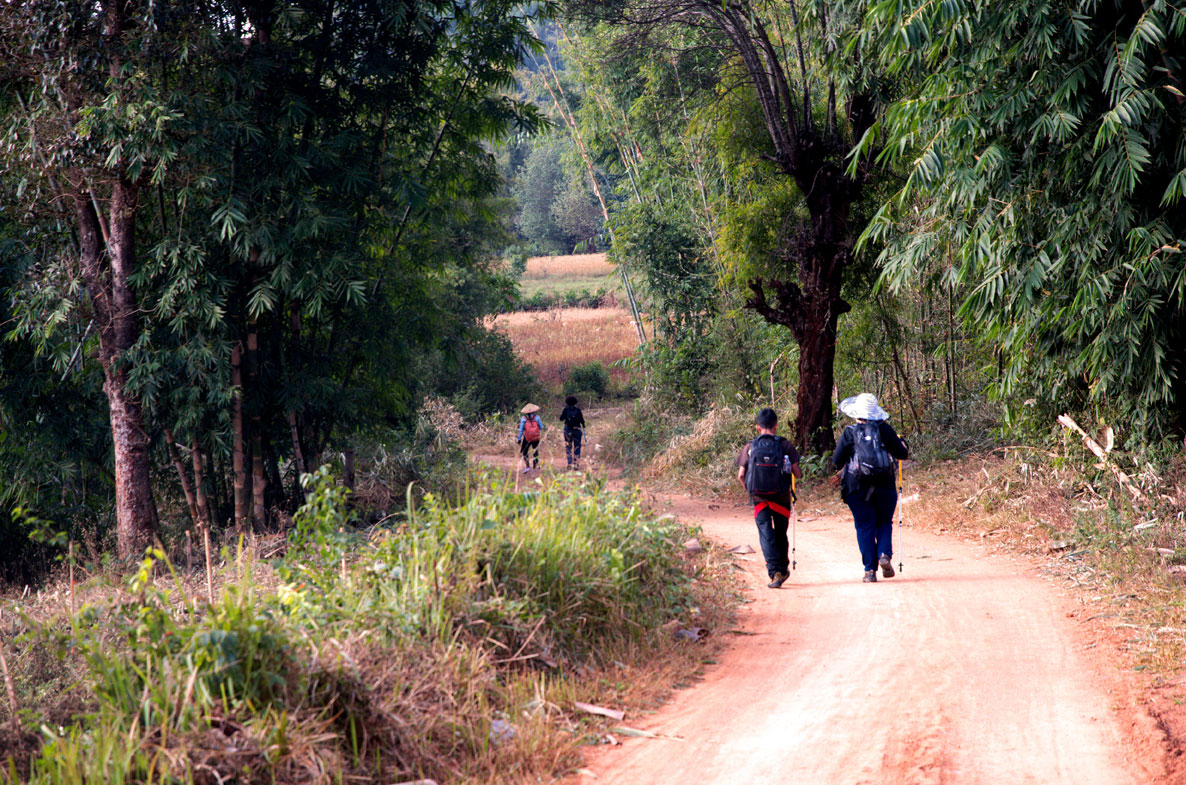
Overview
Inle Lake is a super interesting location to visit in Myanmar, which I will describe in Part 3 of these Myanmar posts. Most people take a bus there from the Heho airport, but an alternative, which we chose, was to trek for two days east through small villages of many ethnic groups and spend the night in homestay with a family. A longer distance for three days and two nights is an alternative. The ten-to-fifteen-mile/day trek (depending on where your start and sleep) is mostly flat with a gradual downhill slope. If you have the time and energy, it is a terrific experience and an exceedingly interesting way to travel to Inle Lake.
Pindaya Caves
We flew the approximately one-hour flight from Yangon to the Heho airport, arriving at 10am. We were staying the night at Kalaw, but went to Pindaya Caves first. We hired a taxi to take the four of us to the caves, wait while we visited them, and then take us back to Kalaw, all for K75, 000 (about US$55 – going forward will dispense with “US”). At the time our travel, one dollar equaled about 1350 Kyats.
The Pindaya Cave complex (also known as Shwe U Min Natural Cave and Pagoda) sits on a high hill outside the town of Pindaya. From the town center, the entrance is a forty-five minute hike along the Shwe U Min Pagoda Road that features views of agricultural fields and twisty trees. It is open to tourists during daylight hours, generally from 6am to 6pm.
At the steps up to the complex, past restaurant stalls and women selling souvenirs, there are two statues – a princely archer pointing his arrow at a giant, black spider with a menacing face. It is based on a legend of a prince saving a bathing princess from the spider. After a few steps, there is a ticket booth (admission is K2,500) and a place to deposit your shoes and socks. You can then walk twenty minutes up a covered stairway or take an elevator to the cave. I suggest the latter, save your time for the cave, but there are good views of the city and Botoloke Lake from the walkway.
The cave is covered with over 8,000 statues of Buddha among electric lights strung throughout. This cave has been used for storing and venerating Buddha statues for the past thousand years.The number of mostly gold statues continues to grow from donation near and far. If you think all Buddhas are more-or-less alike, a visit to this cave will dispel that notion.
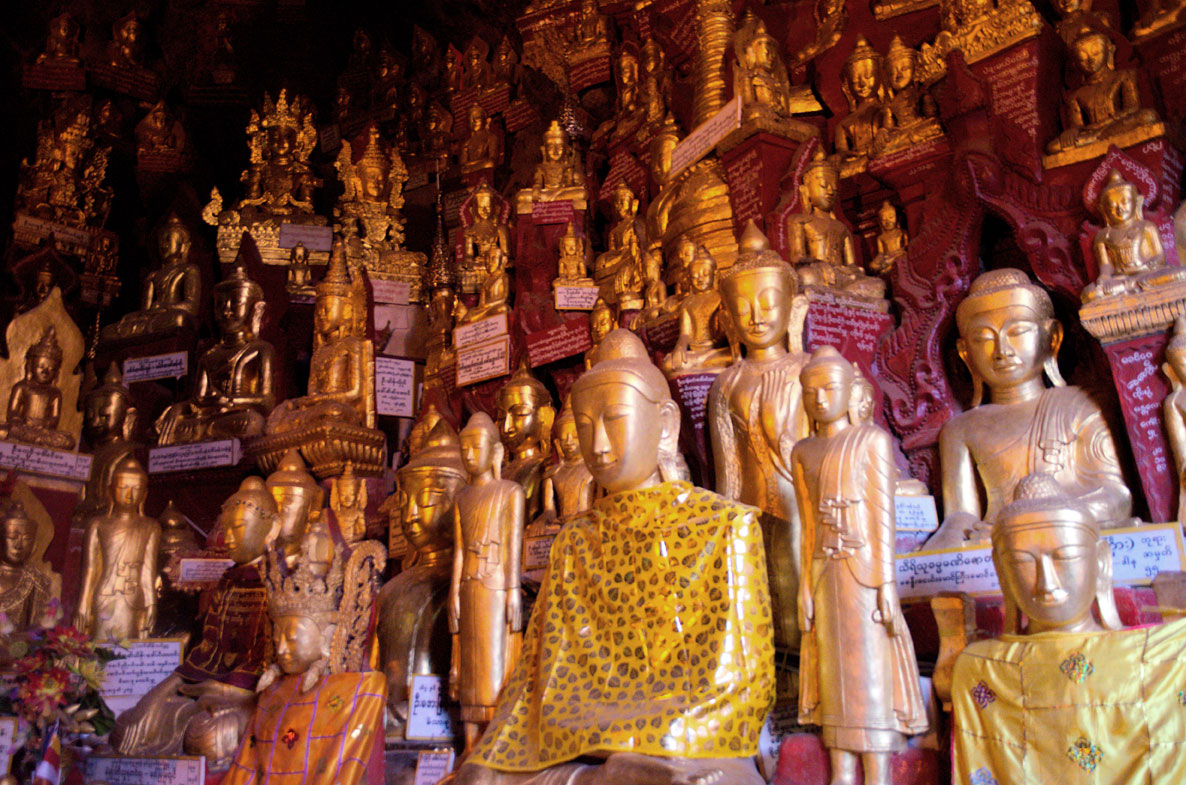
Luckily the floor is not slippery or coarse to the feet. The density of the Buddhas is overwhelming, but spectacular in its shiny exuberance. I was able to use a tripod, so I spent over an hour shooting away.
My favorite one is below.
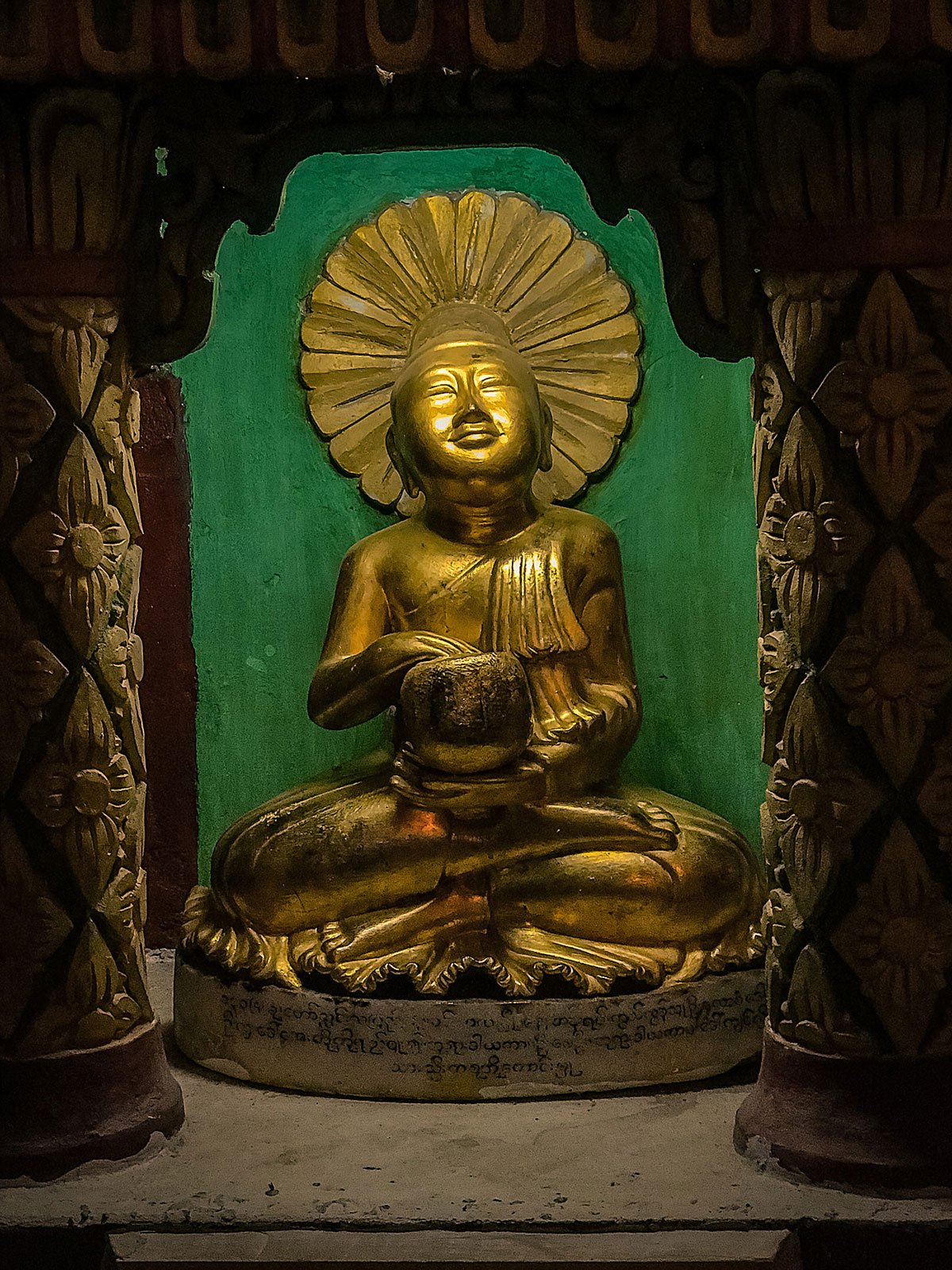
The head is tilted up with an ecstatic and serene expression, maybe nirvana was nigh.
Kalaw
Kalaw was our destination before our hike to Inle Lake the next day. We stayed at the Kalaw Heritage Hotel, which is the second oldest hotel in Myanmar, built in 1903 during British rule.
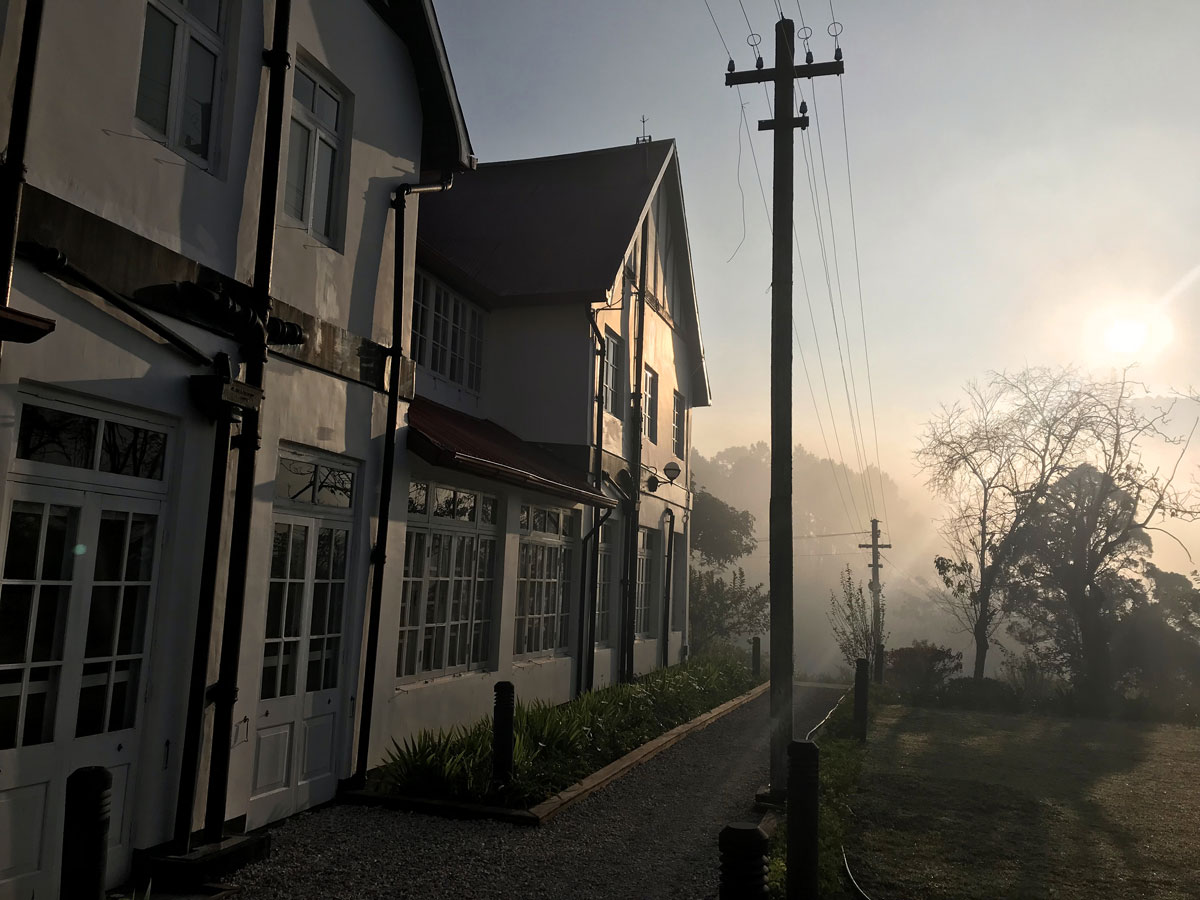
A fifteen to twenty-minute walk into town, this hotel was a refuge with its warm service and beautiful gardens The price of a single room was $63.80, but a 3% charge was added for using a credit card (this happens sometimes and is annoying), so it was $65.70.
This town sits on a hill and has a number of colonial buildings. The center of town is the Aung Chan Tha Zedi Stupa, which is lit up at night highlighting its glass mosaic walls.
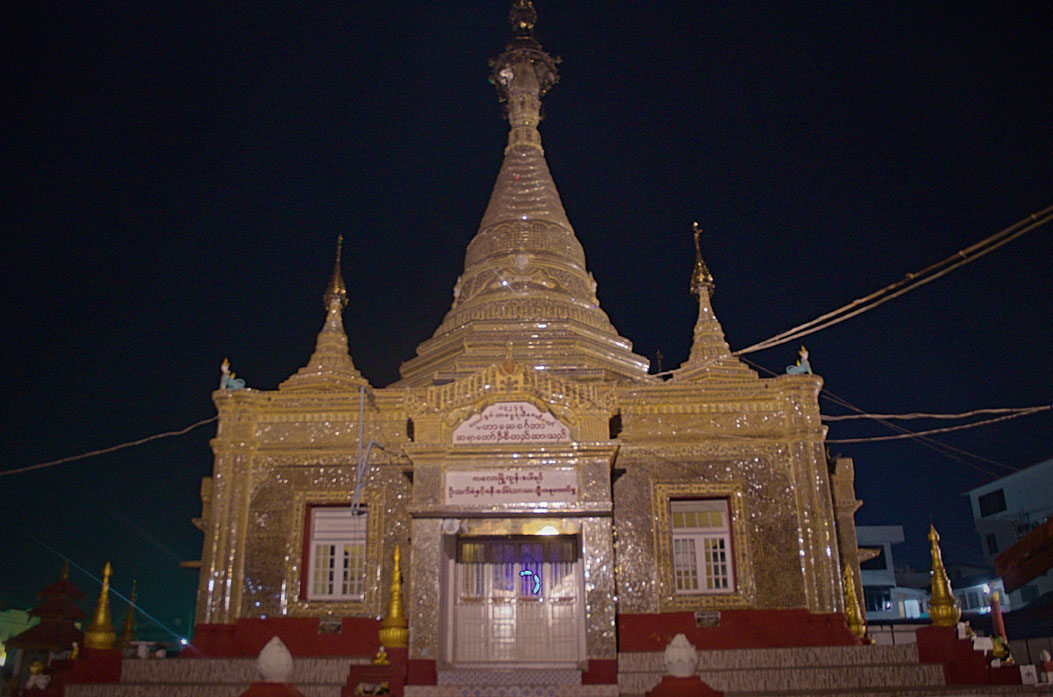
A stupa is a round structure (solid or a reliquary) dedicated to Buddha or other Buddhist figures and often is surrounded by other structures. For Hindu temples, the stupa design evolved into a high open space similar to a spire in a church. In contrast, a pagoda is a temple or sacred building, usually with many tiers. While traveling through Buddhist countries, I found it’s not always clear if a structure is a stupa, a pagoda or some other devotional space. While traveling in Nepal a few months before this trip, we went to Lumbini, the birthplace of Buddha. There, every Buddhist country constructed a temple based on its traditional style. It is a good primer on Buddhist architectural styles. https://exploringed.com/nepal-venerable-cities-towering-mountains/
The central marketplace has vendors from many different ethnic groups (including descendants of Nepali and Indian workers who came to Kalaw during British rule) and is open during the day and worth a walkthrough.
The highlight of Kalaw for me was dinner at the Thu Maung Restaurant, which provided seemingly unending condiments and side dishes in addition to the ordered traditional Burmese dishes and curries. Plus the price was very reasonable, about $6 / person).
That night we found the office of Ko Min Trekking and, fortunately, Ko Min was there and we discussed the details of the trip. He is short, broad-shouldered, muscular man with an expansive smile. I thought he might be of Nepali descent, but his lineage was from Myanmar. We were responsible for our backpacks, but he had some good medium sized ones which he let us use.
Hike to Inle Lake from Kalaw
The next day, Ko Min met us (from left to right: Peter, Caitlin, Ed and Khadija) at the hotel.
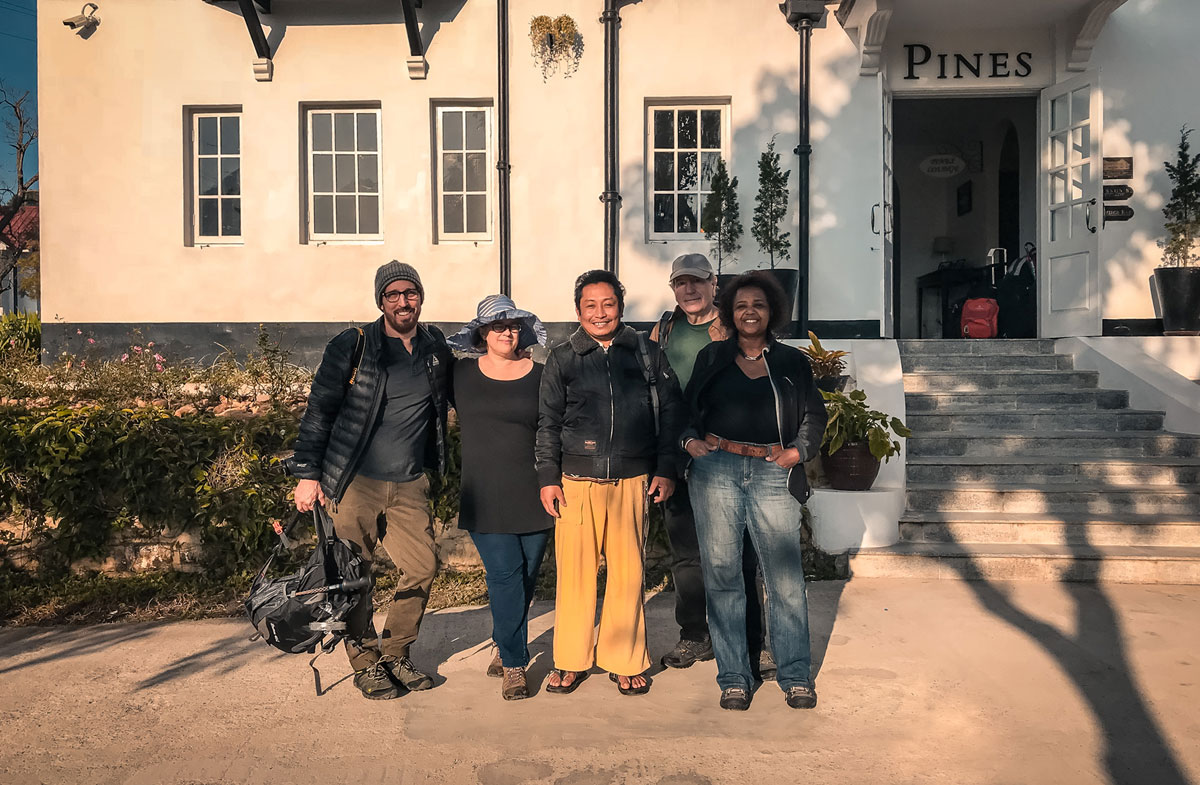
We met our two guides, Sanjae who was of Nepali descent, and Nyein Nyein (pronounced similar to Nay Nay). We put our luggage into an SUV, as well as our backpacks with clothes, toiletries, and cameras that we would be carrying ourselves since there were no porters. The cook Pho Pa did not hike with us but went by car to prepare our two lunches. At the end, a driver would deliver our luggage.
This is a popular hike with different routes to Inle Lake. You need to use a tour company as they pay each village for you to walk through and arrange the homestay with dinner. There are different routes and villages which can be chosen. Ko Min used one for us where there was only one other similarly sized group walking on the same day. We were there in mid-January, which is a dry and cool time (this climate extends from October to January). June to September is rainy and the trail can be very difficult. February to May is doable but very hot. For the guides, food, and homestay, we paid $60 / person, excluding tips. It is well known that Ko Min takes care of everyone in each group, which was an important consideration for us.
We started at an arch, presumably built in 2016.
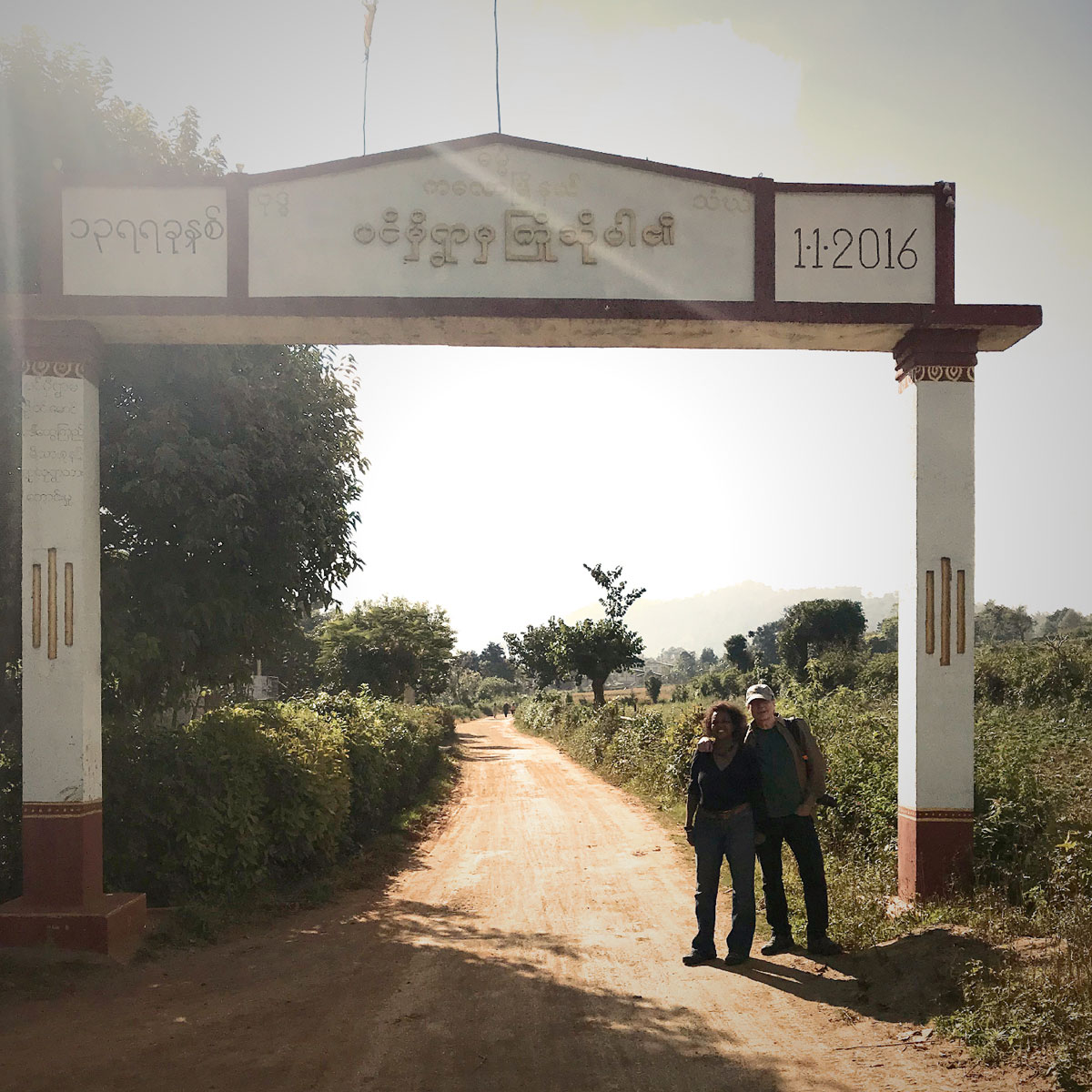
The Danu people lived in the first few villages.
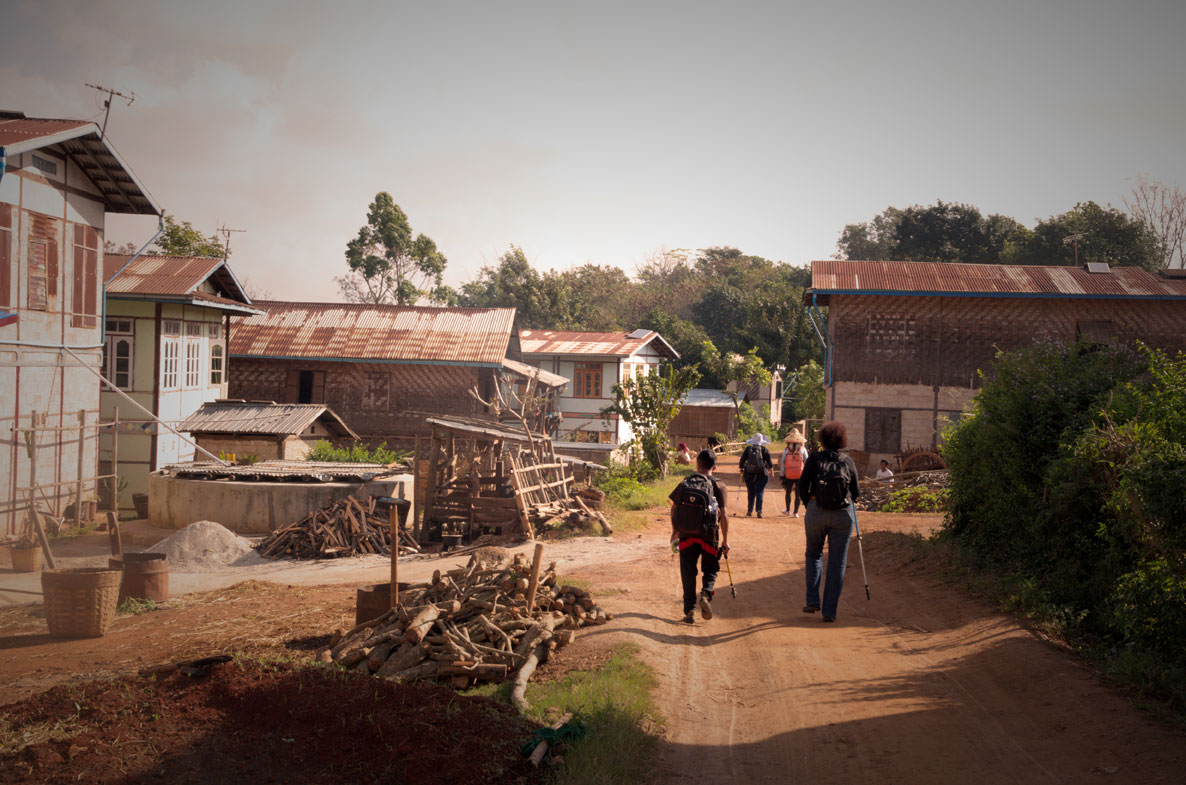
They have their own language with vast similarities to standard Burmese. There are many dialects among the villages, but they are all able to communicate with each other. Many Danu people are fishermen and agriculturalists. They mostly reside in the Shan State, around Pindaya especially. Here, some of them were in the basket making business.
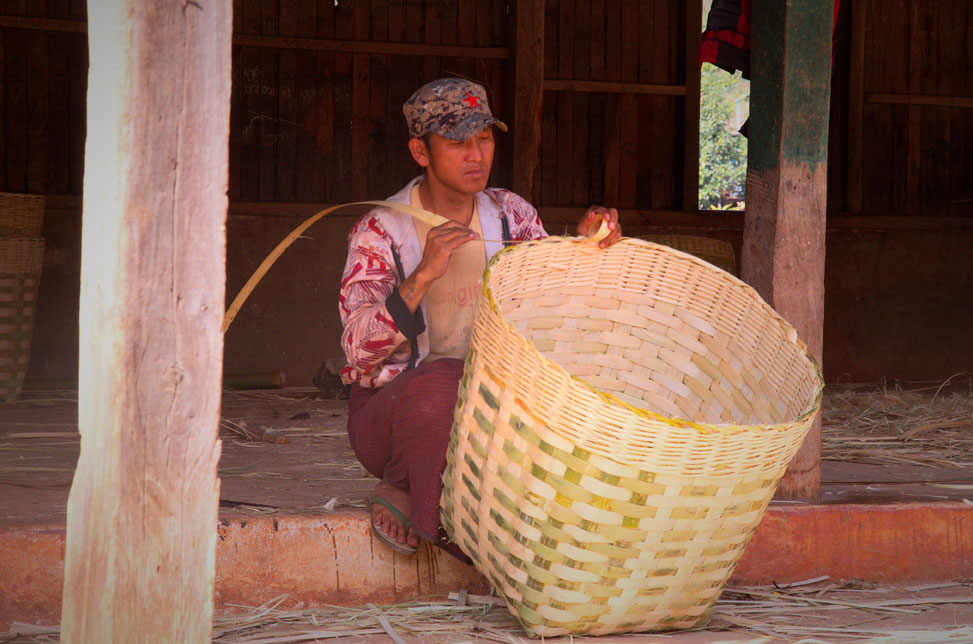
This walk was always interesting just observing daily life
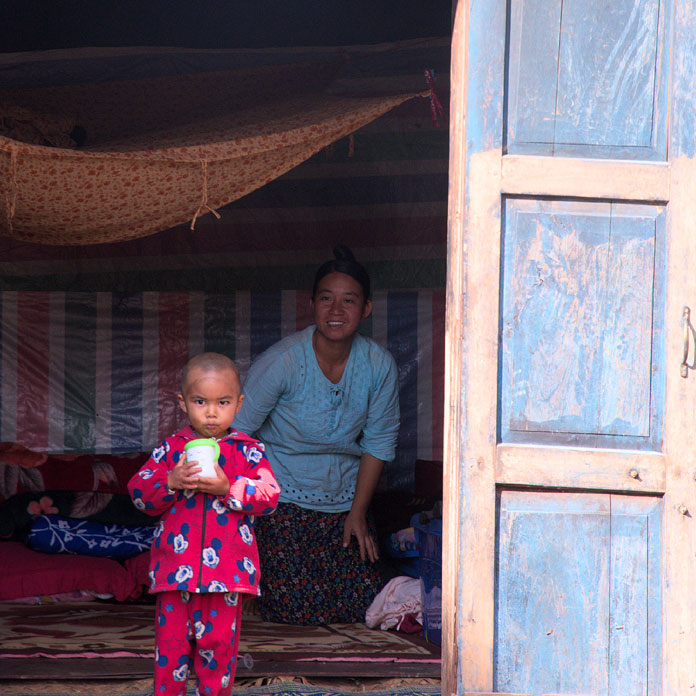
Myanmar may be the most Buddhist country in the world. There monks of all ages, including young boys known as novices, such as the three we encountered.

As we travelled, the landscape varied from growing crops to open fields taking a rest from agricultural production.

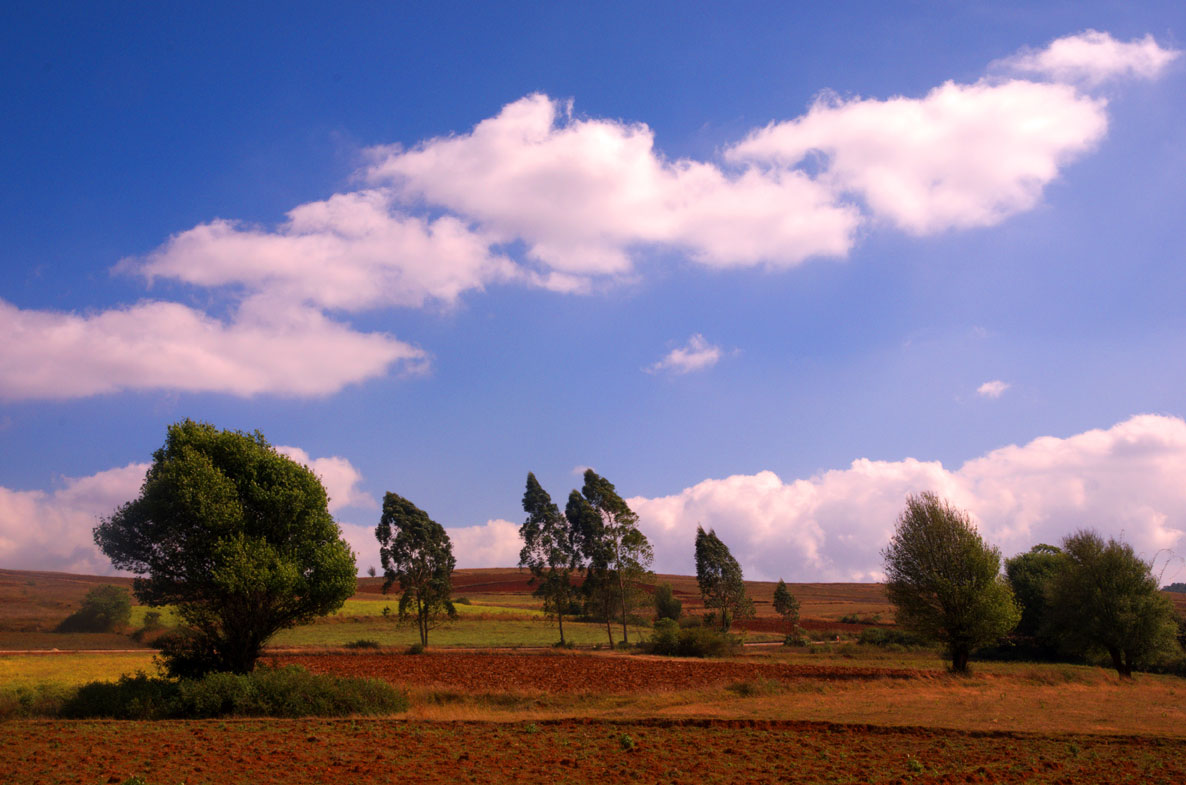
After a few hours of hiking, we were traveling through the area of the Pa’O people, where most women wore large, red head scarves.

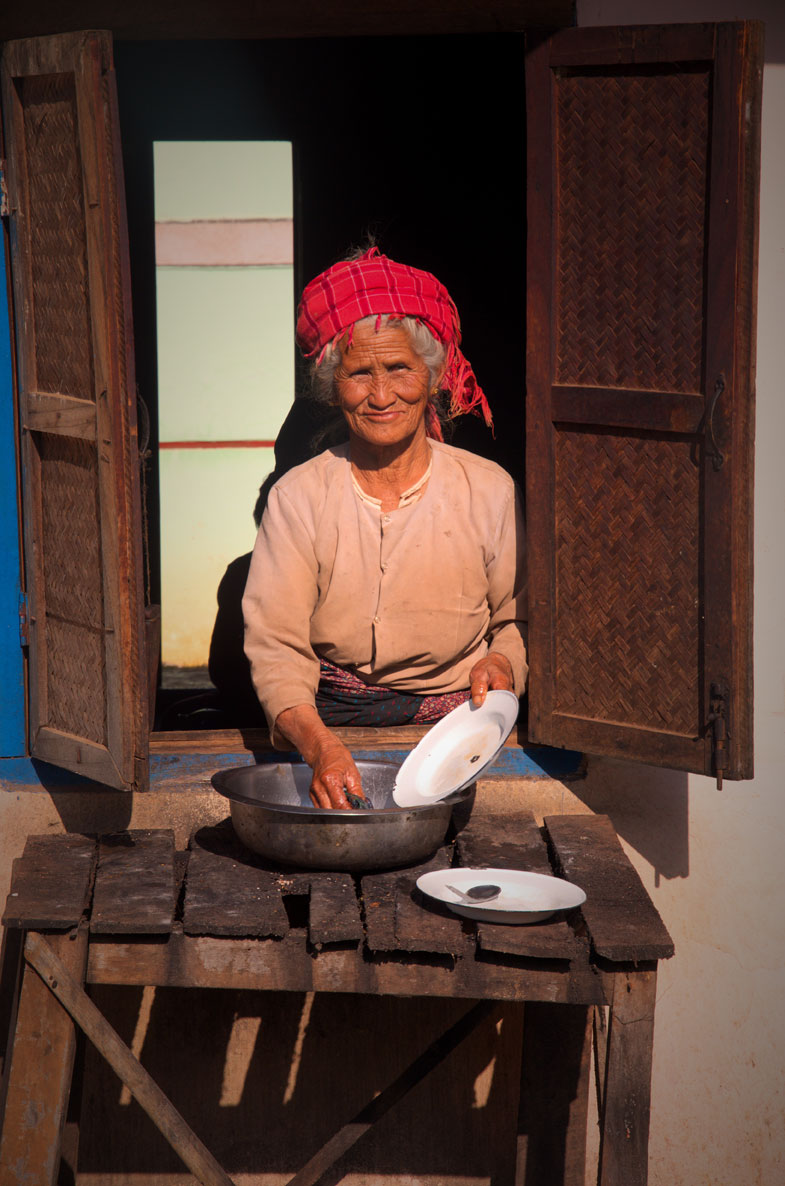

The Pa’O people have been present in Myanmar since 1000 BC when it was known as the Thanton region. They are the second largest ethnic group in the Shan State, but also reside in other regions. We were among the Lowland contingent (there are also those in the Highlands), but there are around twenty-four subgroups. The Pa’O are also skilled agriculturalists.
Around 1pm, we stopped for lunch in a small covered building with one open side and wooden tables. We were presented with sumptuous noodles dishes with various meats and vegetables and finely carved local fruits.
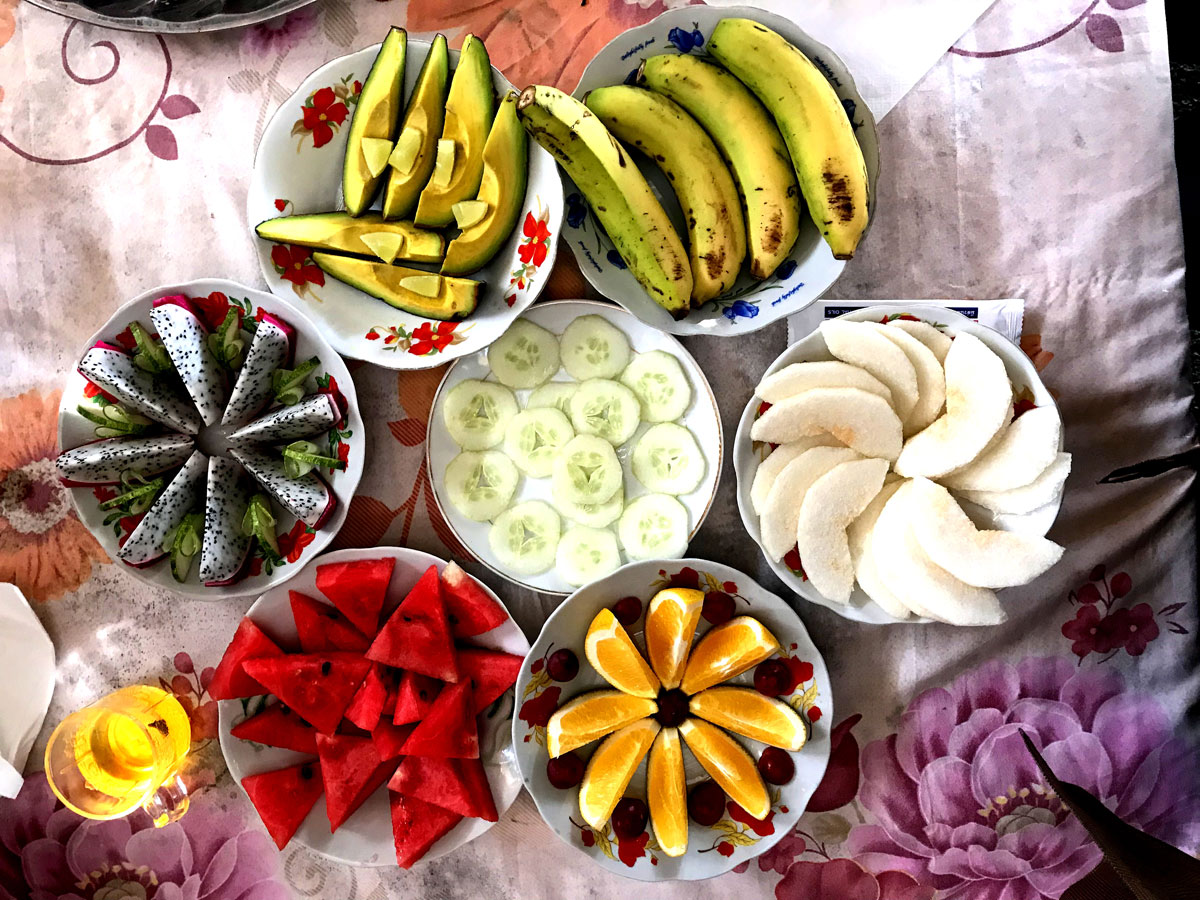
Then we continued through fields and villages until we came to a large Buddhist monastery and school in the middle of a large open area where kids played and adults socialized.
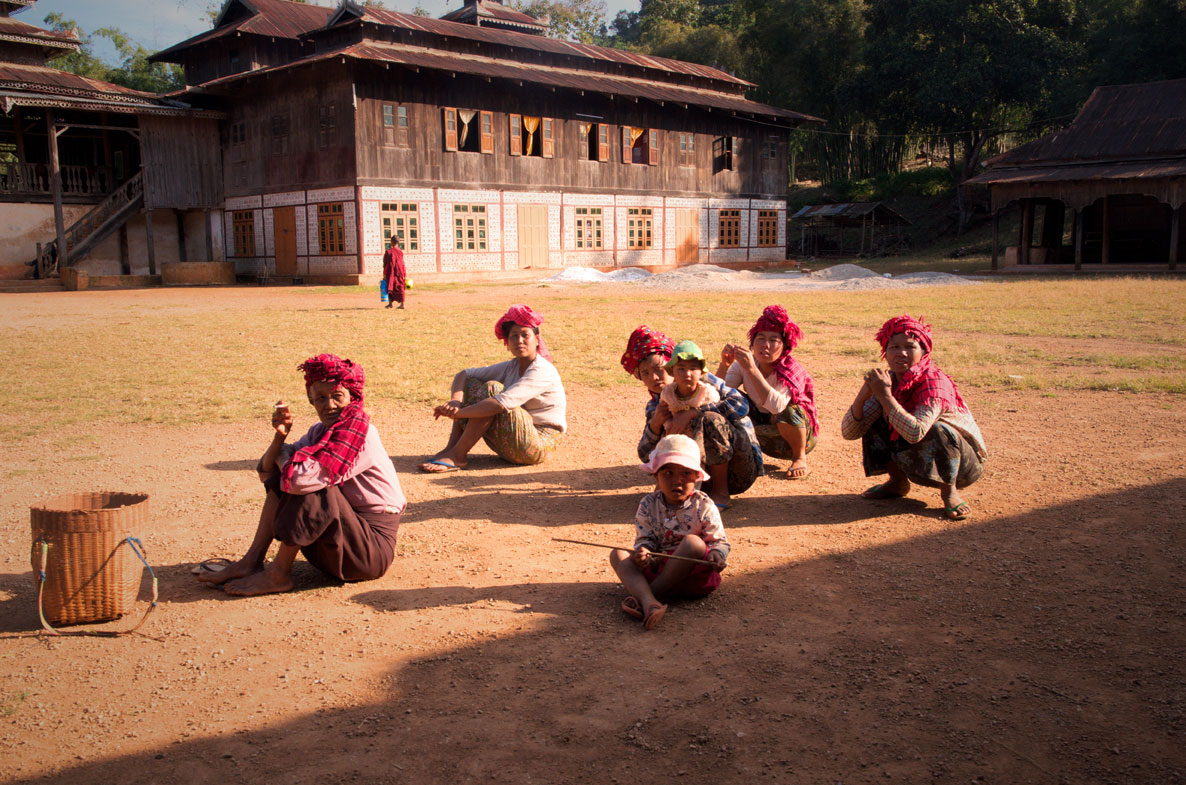
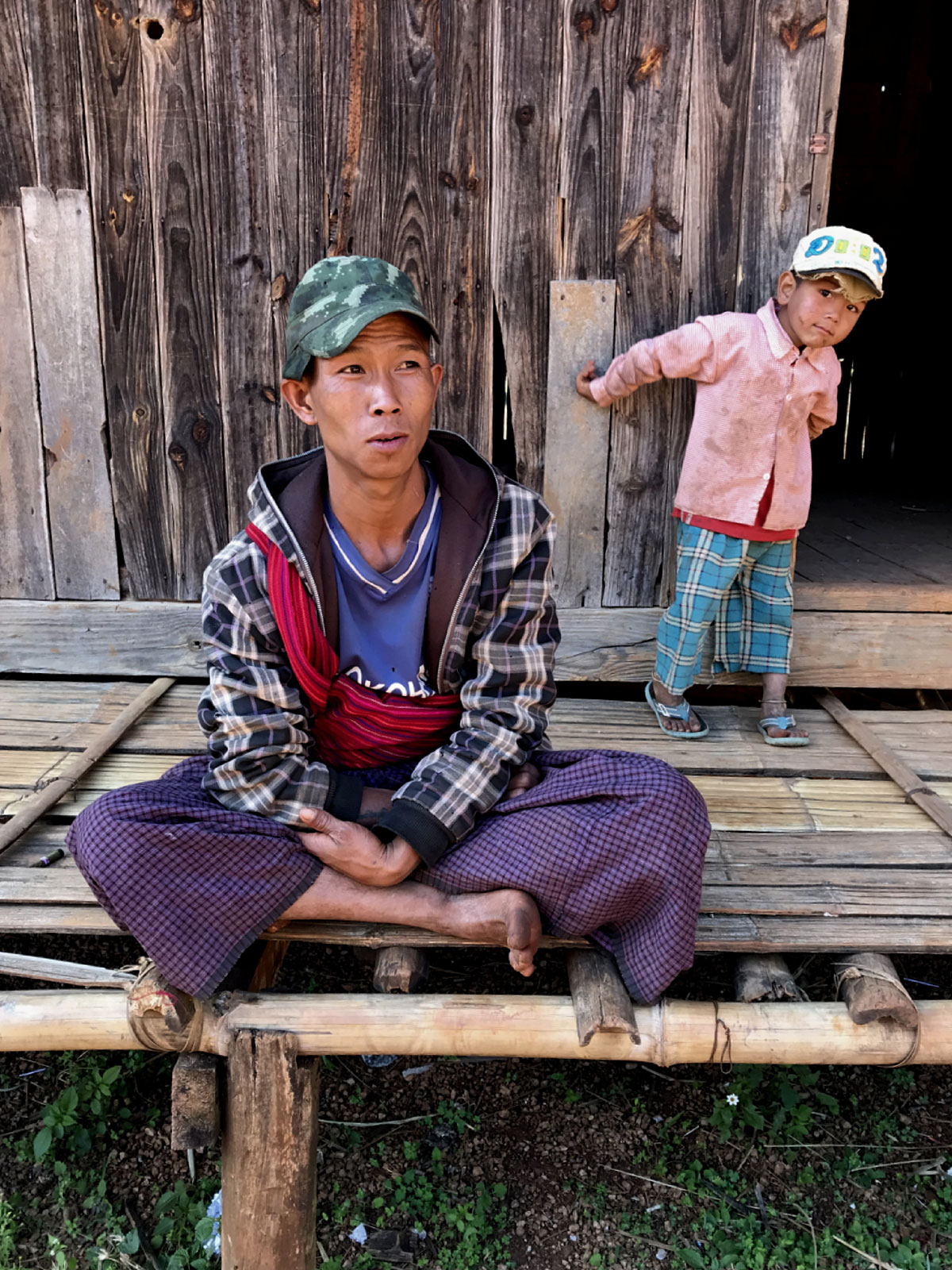
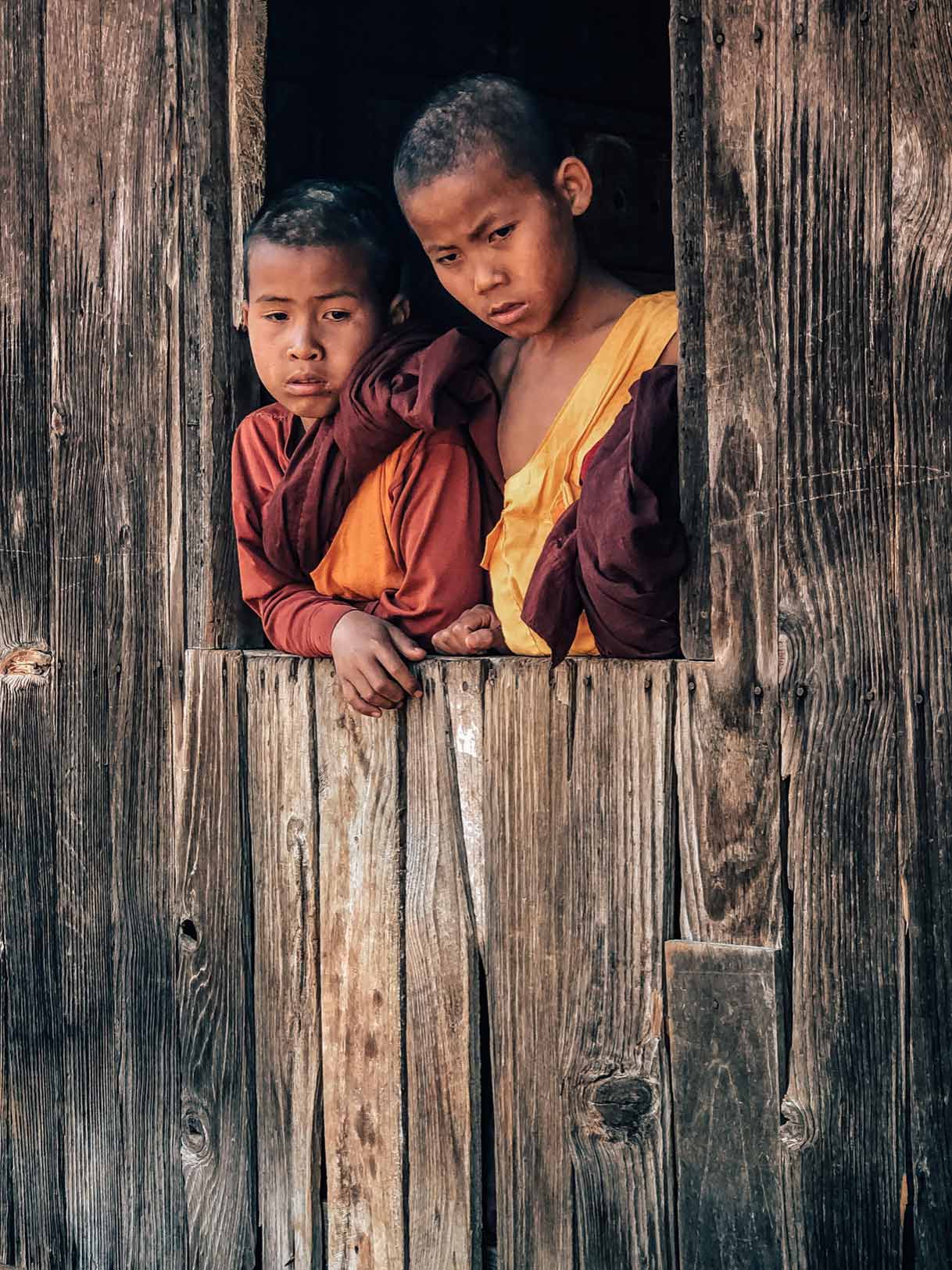
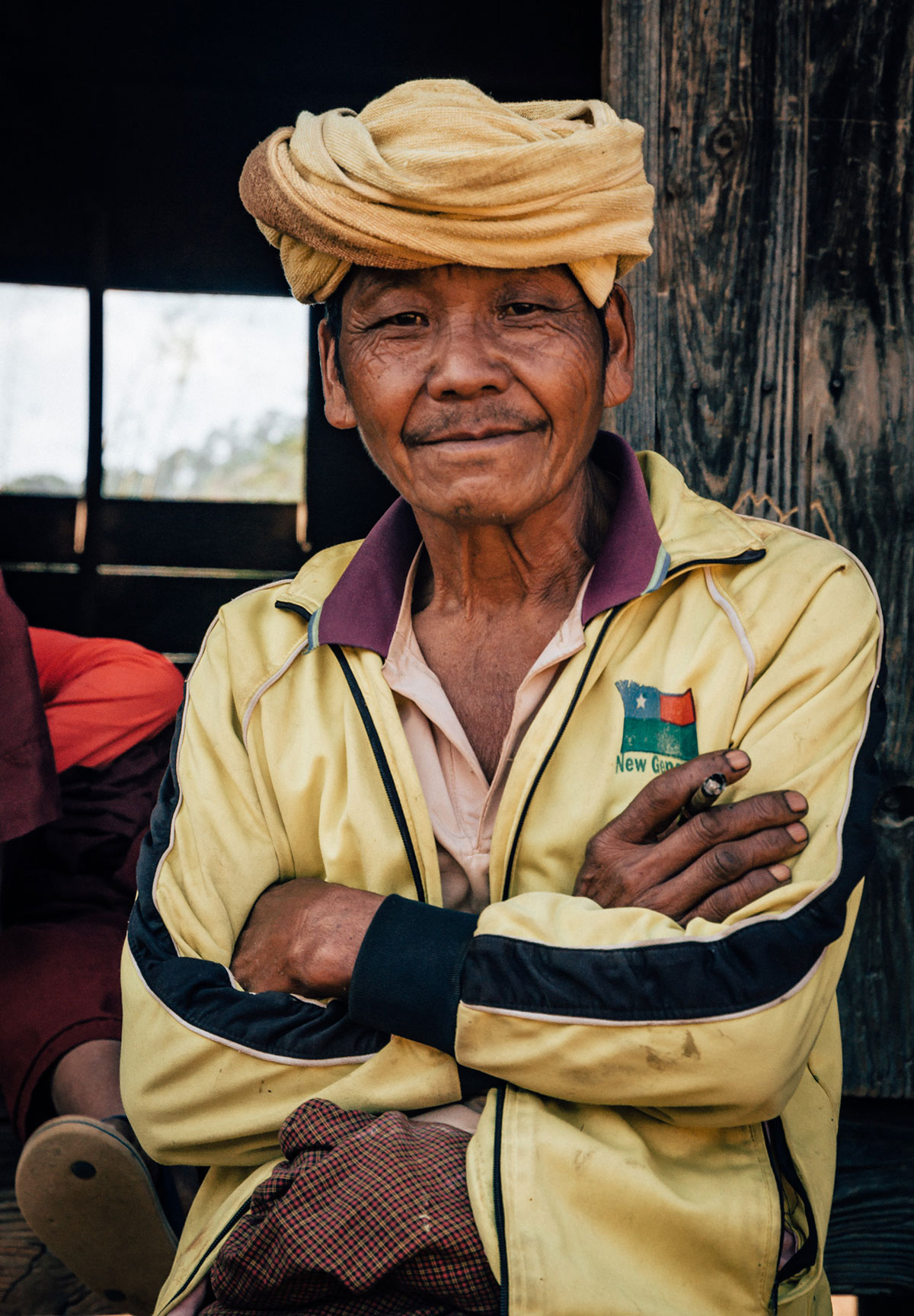
At this point, I asked Khadija to give us an update on what we had seen on the hike.
A little pass the Monastery, the locals were building a house. The community jointly works together to build the houses for each family.

At dusk, we arrived at our homestay location. Below are the children of our host family.
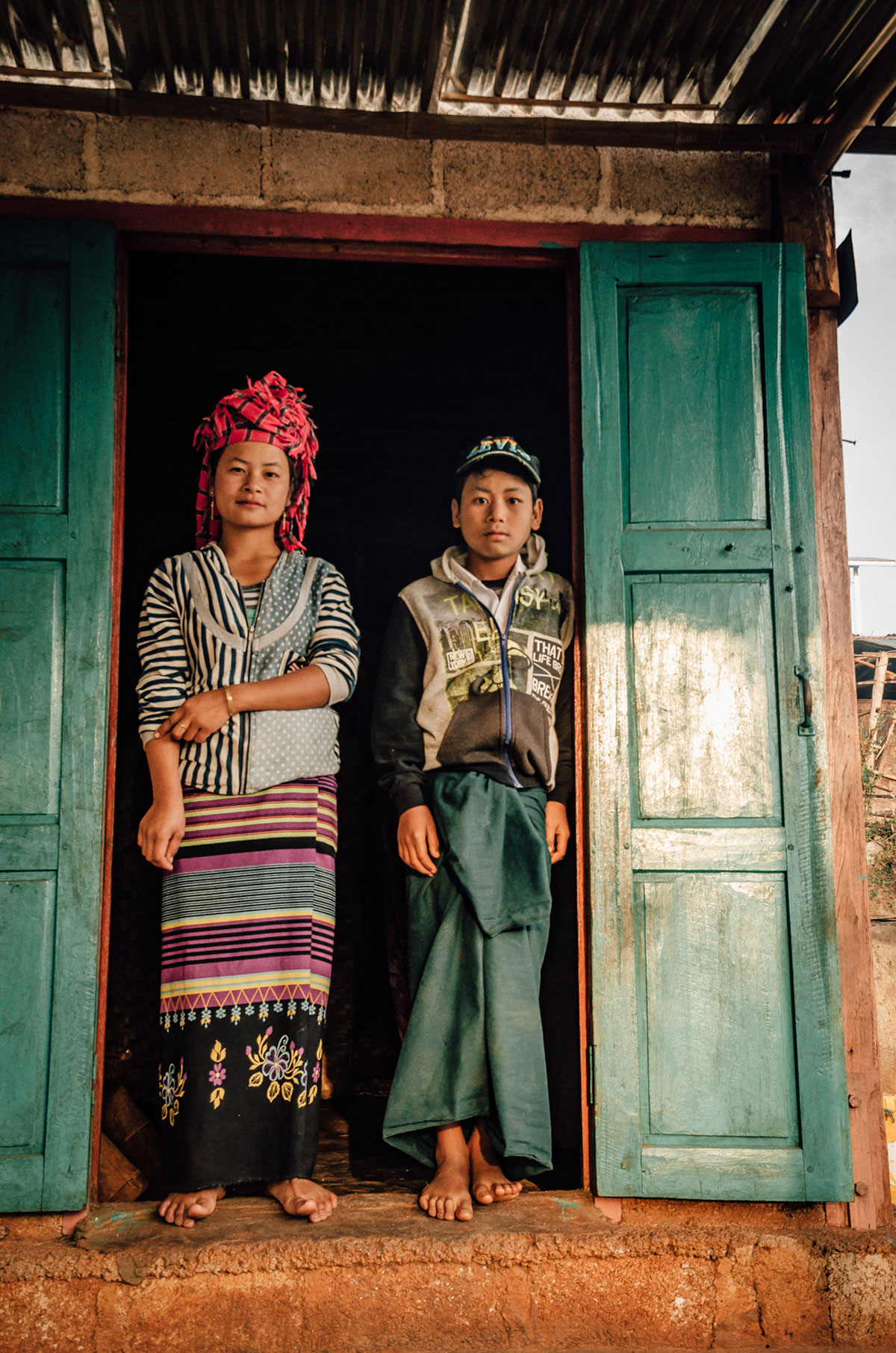
We stayed on the top floor, accessible by a slightly sloped bamboo ladder which was a bit hard on bare feet (no shoes allowed). The four of us shared a room with two mattresses on the floor, each with their own mosquito net. For dinner, we ate a variety of meat and vegetable dishes while sitting on pillows in the only adjacent room on the second floor, while communicating with our host family through the guides. At night, going to the outdoor bathroom was a chore: undoing the mosquito net, stepping down the ladder, looking for the path in the dark to the outhouse, and passing a wide-awake cow sticking her head outside the barn observing your presence with a bored expression.
The next morning, after a noodle and fruit breakfast, we left the small village in the mist and saw our watchful cow in full-body.
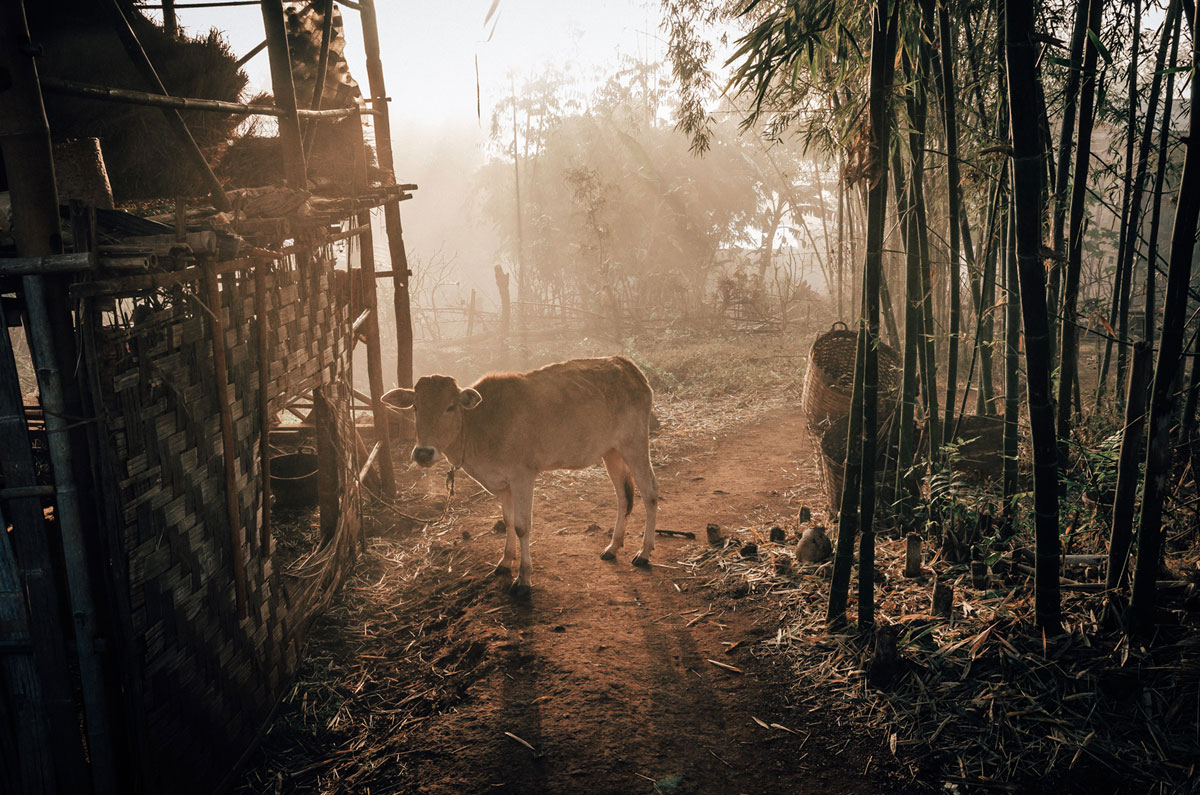
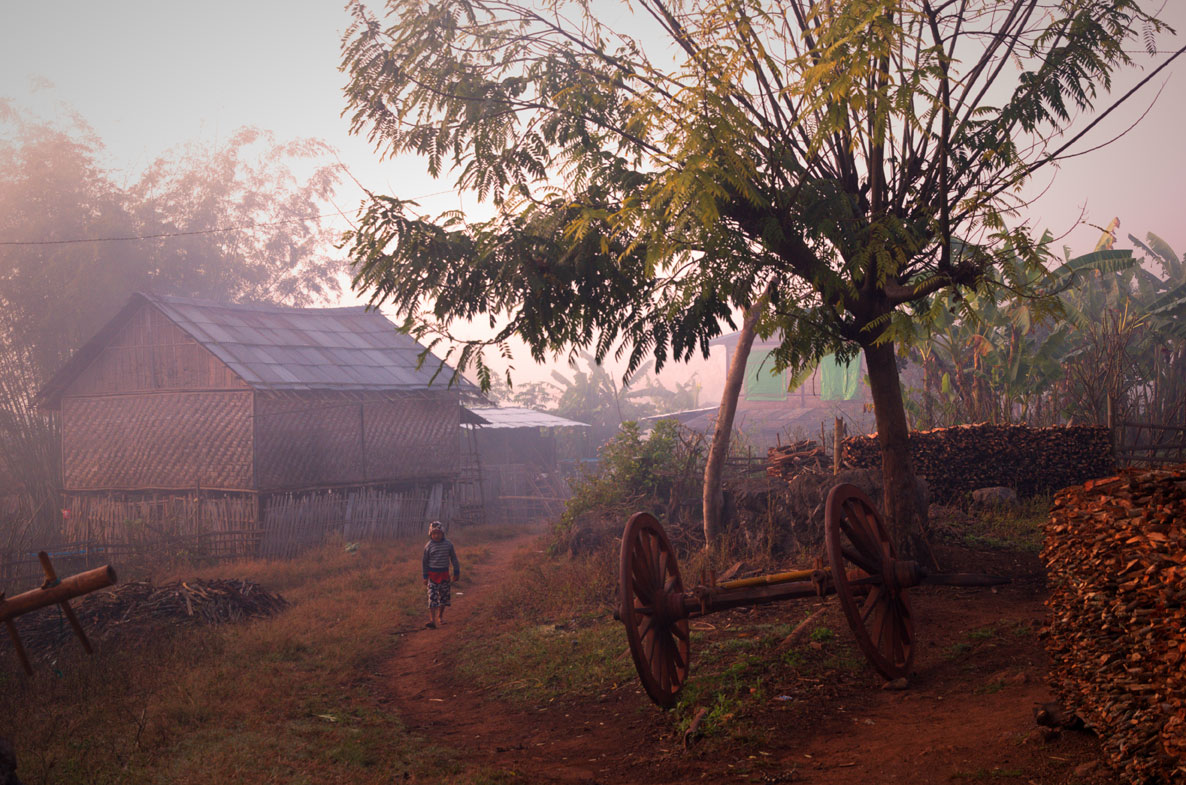
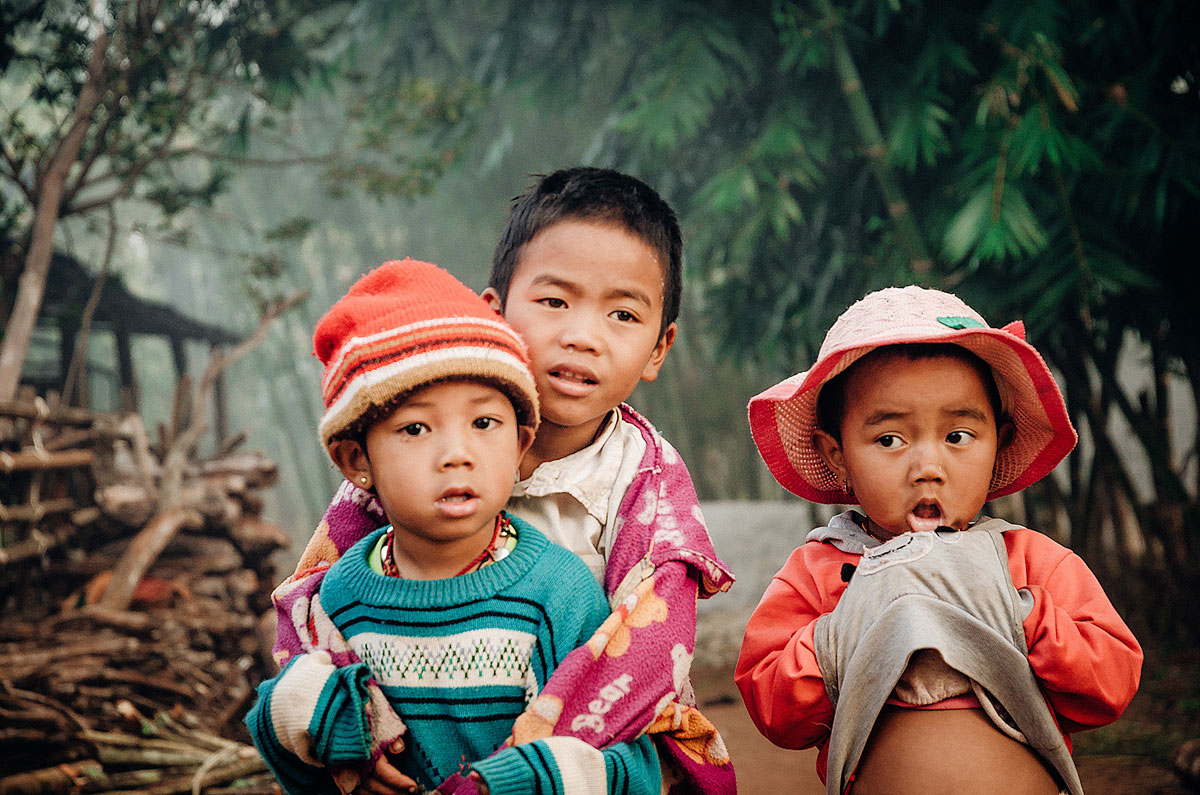

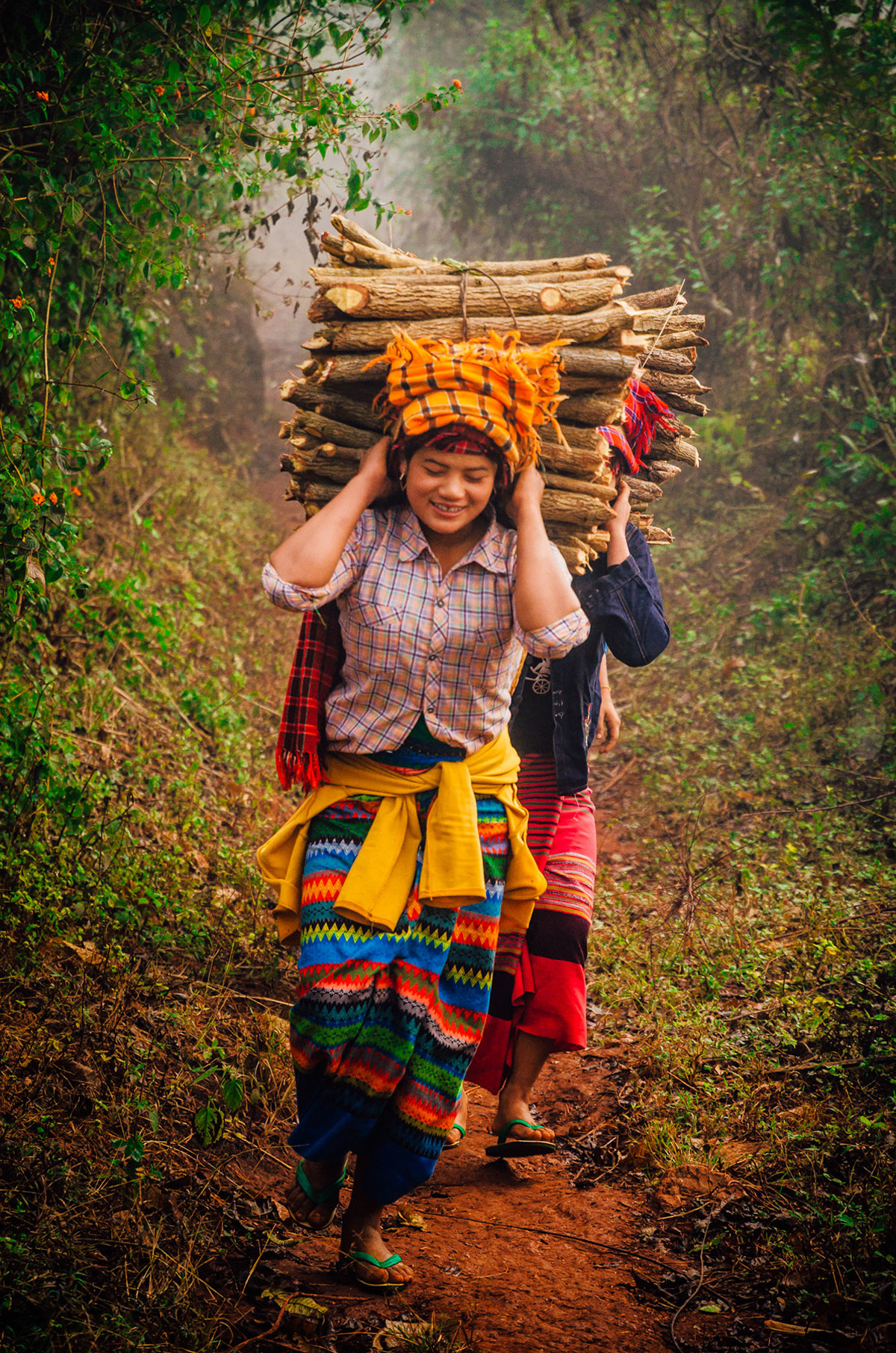
After an hour or so of hiking down a steep rocky path in what appeared to be a park reserve in a canyon with a river at the bottom, we passed a Nat building. Nats are spirits which have powers to help or hinder people and manifest in natural objects like rocks and trees. While most people in the country are Buddhist, many also perform Nat rituals, like leaving food by a river to pray for rain for crops.

A short walk then brought us to a Buddhist worship place on top of a hill, accessible by many steps. While resting in the shade and the breeze, we observed the Buddha statues, which receive various food and drink offerings.
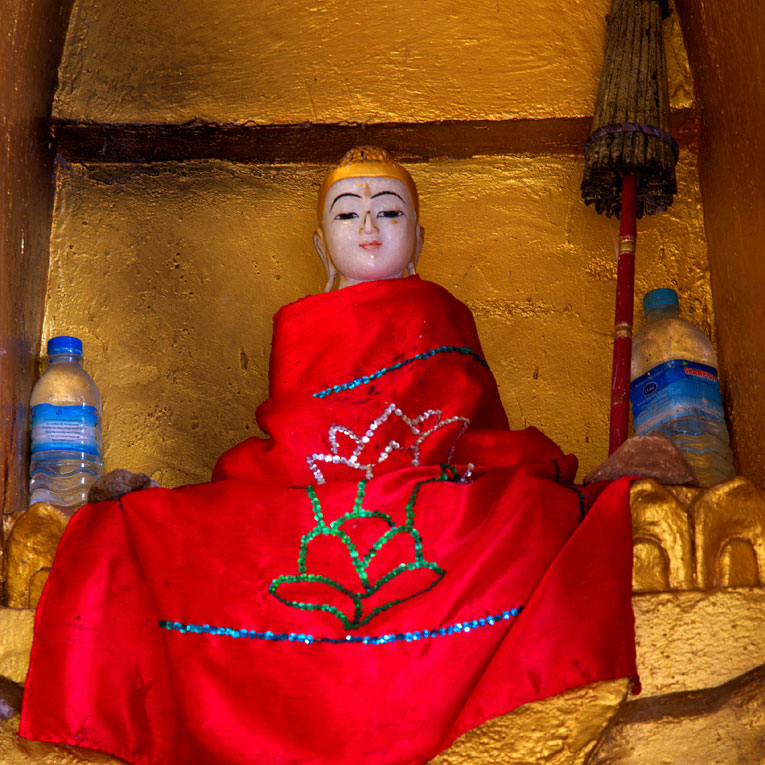
Continuing on the trek, periodically we felt like stopping and enjoying the unpolluted openness of the landscape.
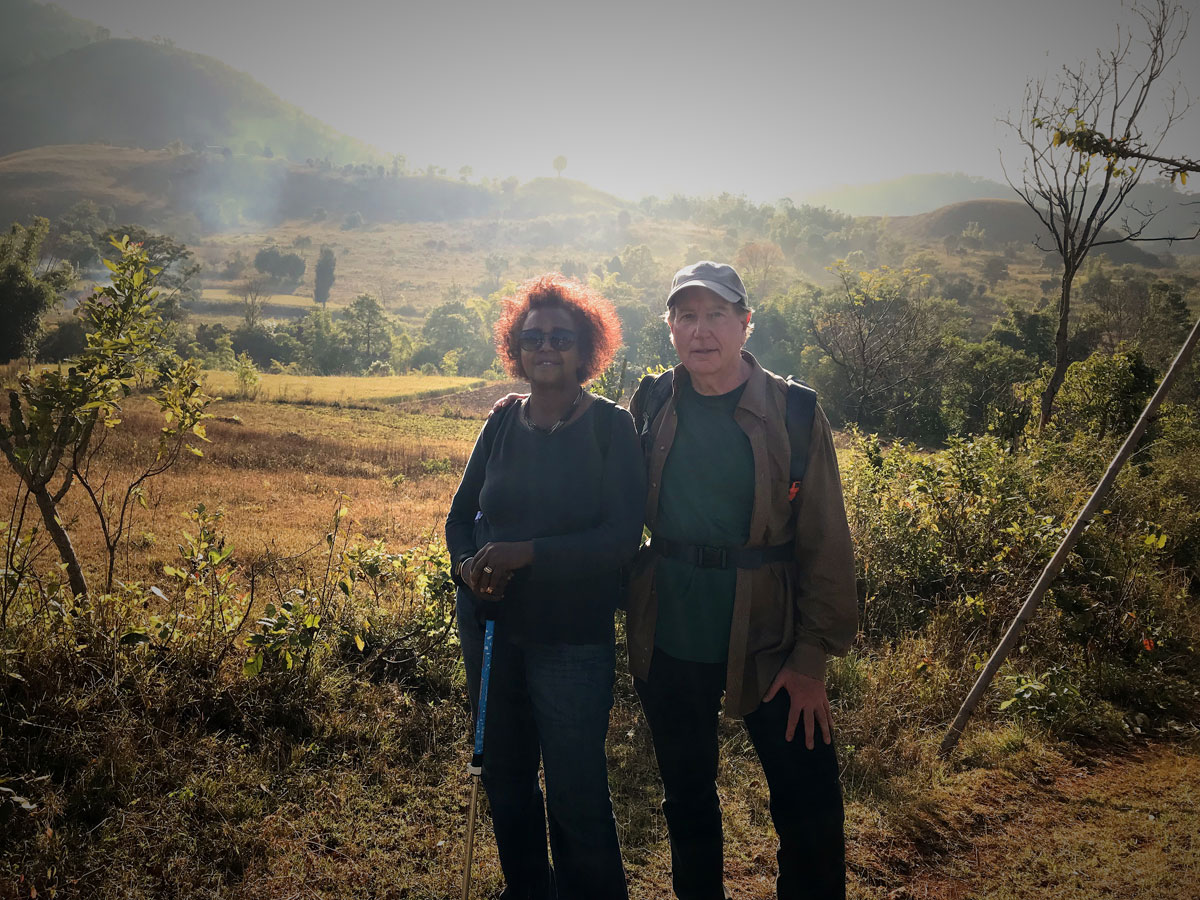
While walking through one village, we saw steam floating from a building. We then observed the making of brown sugar through a series of floating pots.
Of particular interest was that the crops would change as you walked. One stretch was a large swath of sunflower.
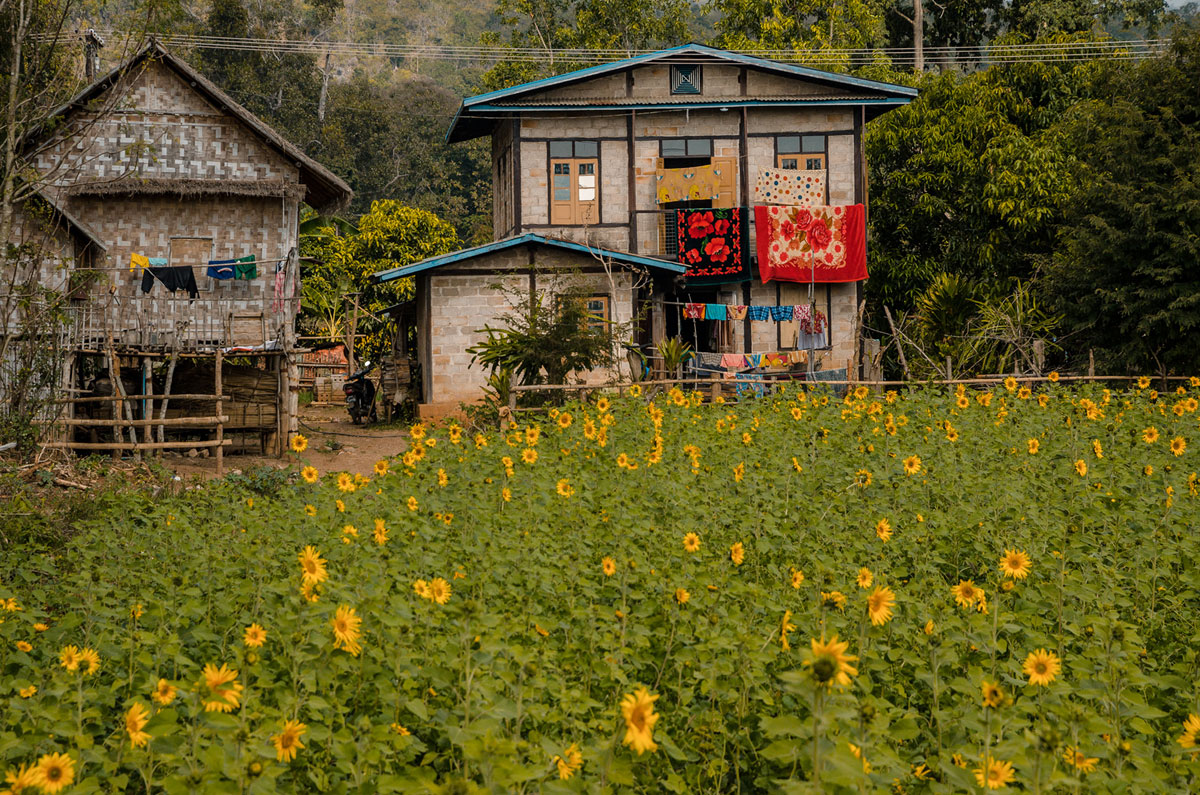
Around 1pm, Khadija and I made it to the final building where we were served our final lunch. Caitlin, suffering from blisters on her feet, but who valiantly trudged on despite the discomfort, arrived about forty-five minutes later. After our lunch which, we ate with abandon, we posed for a group photograph. From left to right: cook Pho Pa, guides Nyein Nein and Sanjae, Ed, Peter, Caitlin and Khadija.

For the rest of the day and the following three days, we explored the wondrous Inle Lake. Read about it in Part 3.

